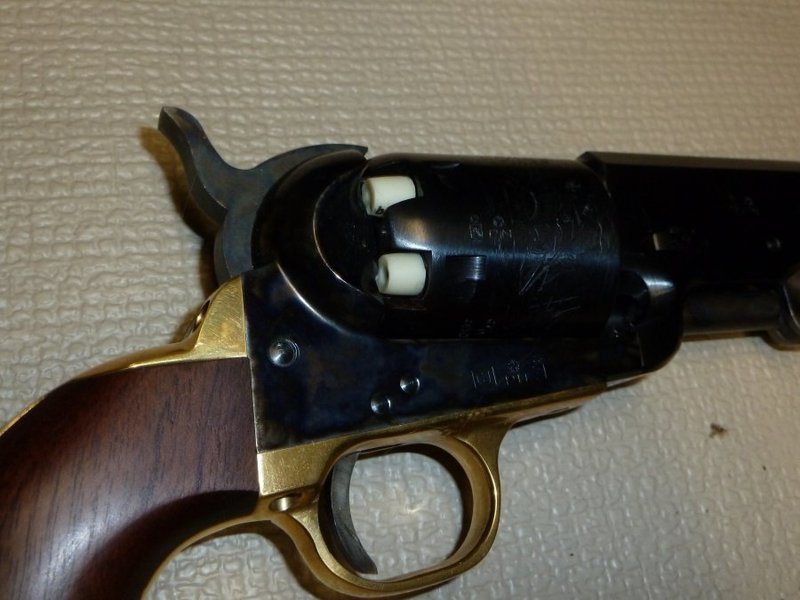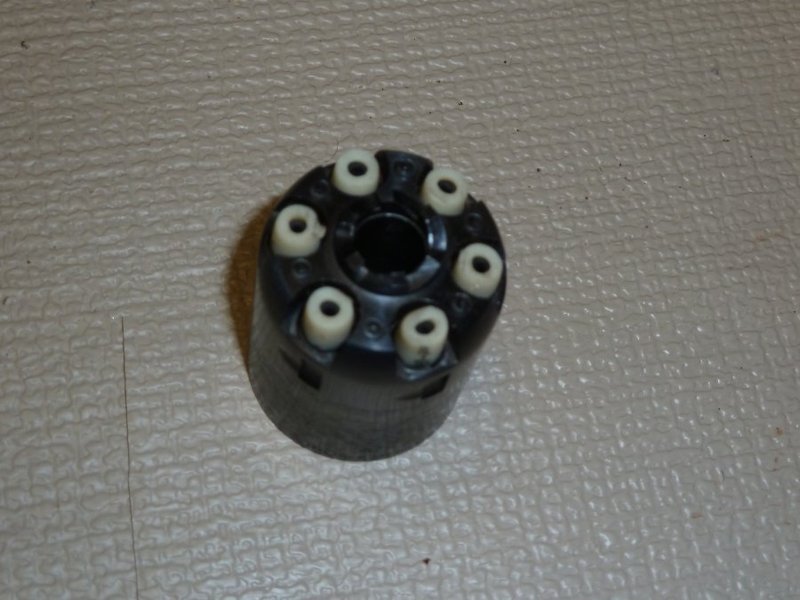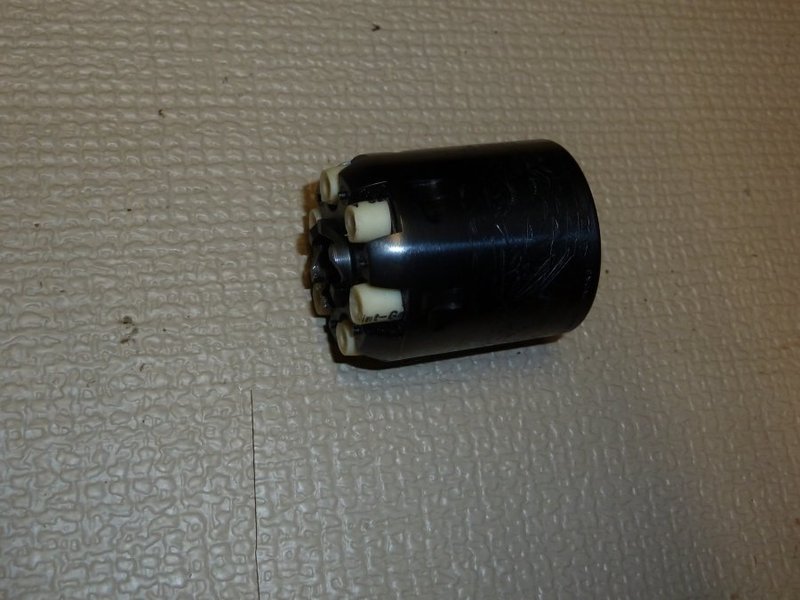I'm a big believer in dry-firing but i agree it's not good on C&Bs. I suppose i could glue a piece of rubber on the tip of the hammer but that would be a nuisance to take on and off. Is there a product on the market that would work.?
-
Friends, our 2nd Amendment rights are always under attack and the NRA has been a constant for decades in helping fight that fight.
We have partnered with the NRA to offer you a discount on membership and Muzzleloading Forum gets a small percentage too of each membership, so you are supporting both the NRA and us.
Use this link to sign up please; https://membership.nra.org/recruiters/join/XR045103
You are using an out of date browser. It may not display this or other websites correctly.
You should upgrade or use an alternative browser.
You should upgrade or use an alternative browser.
Solution to the dry-firing problem???
- Thread starter john gill
- Start date

Help Support Muzzleloading Forum:
This site may earn a commission from merchant affiliate
links, including eBay, Amazon, and others.
Grizzly Adams
50 Cal.
- Joined
- Jul 21, 2014
- Messages
- 1,049
- Reaction score
- 2
Why not just remove the nipples from the cylinder, or the cylinder altogether?
I took a narrow piece of fish tank pump tubing and cut pieces from it just longer than the nipples. It just fits over the nipples with a little pressure and lets the cylinder rotate.
The hammer strikes the tubing which absorbs the shock.
They are on all my cap and ball revolvers.
Tubing used to deliver oxygen from a portable oxygen tank also works.
Ron
The hammer strikes the tubing which absorbs the shock.
They are on all my cap and ball revolvers.
Tubing used to deliver oxygen from a portable oxygen tank also works.
Ron
Poor Private
58 Cal.
- Joined
- Feb 25, 2007
- Messages
- 2,073
- Reaction score
- 18
Someone once stated that the hammer of properly tuned C&B pistol does not hit the nipple. What you should have is a bit of clearance for the cap. and that what the hammer is hitting is the cap only not banging down on the nipple. Don't remember where I saw this but sounds right to me. So if that is true then dry firing you should not hit the nipple. Any comments?
Mountain Dewd said:Why not just remove the nipples from the cylinder, or the cylinder altogether?
Oh come on. That's too much of a hassle.
Poor Private said:Someone once stated that the hammer of properly tuned C&B pistol does not hit the nipple. What you should have is a bit of clearance for the cap. and that what the hammer is hitting is the cap only not banging down on the nipple. Don't remember where I saw this but sounds right to me. So if that is true then dry firing you should not hit the nipple. Any comments?
Sounds like a recipe for misfires. I hope my c&b isn't like that.
That was me, among others.Poor Private said:Someone once stated that the hammer of properly tuned C&B pistol does not hit the nipple. What you should have is a bit of clearance for the cap. and that what the hammer is hitting is the cap only not banging down on the nipple. Don't remember where I saw this but sounds right to me. So if that is true then dry firing you should not hit the nipple. Any comments?
On a correctly made C&B revolver, the hammer stops on the receiver before it can reach the top of the nipple cone.
Unfortunately, not all of the reproduction pistols are made correctly and the hammer may actually hit the end of the cone.
This is even more likely if someone has replaced the nipples with a rifle nipple which is considerably longer.
Then, it is also possible that the nipple wasn't screwed fully into the cylinder until it stops against the small machined faces where the threads begin.
Patocazador
54 Cal.
Do you mean percussion caps or toy caps?
Toy caps are corrosive. I don't think that would be a solution that I would try.
Toy caps are corrosive. I don't think that would be a solution that I would try.
Richard Eames said:You asked and received the correct answer.
What? Take out the nipples every time i want to snap the gun?? Nobody's gonna do that.
- Joined
- Jun 4, 2014
- Messages
- 3,936
- Reaction score
- 4,711
Well, I've got a question here, and it may be a dumb one, but is the rule that dry firing a percussion revolver is bad for it true, or is it another one of the many BP "old wives tales" passed down through the generations? Or one that may have been true at one time but not now, or is true with some revolvers?
And, as a follow on, does it damage anything other than the nipples, or perhaps the hammer tip?
Reason I ask is I have handled a lot of used C&B revolvers and have never noted any appreciable damage, that to me, would be accounted for by dry firing.
The number of pistols with "drag lines" around the cylinder, that appear unfired, is substantial. I also can't believe that among the average Joes there is no proclivity to dry fire.
So is this much ado about nada?
And, as a follow on, does it damage anything other than the nipples, or perhaps the hammer tip?
Reason I ask is I have handled a lot of used C&B revolvers and have never noted any appreciable damage, that to me, would be accounted for by dry firing.
The number of pistols with "drag lines" around the cylinder, that appear unfired, is substantial. I also can't believe that among the average Joes there is no proclivity to dry fire.
So is this much ado about nada?
smoothshooter
50 Cal.
- Joined
- Nov 6, 2005
- Messages
- 3,515
- Reaction score
- 2,201
At 6 to 8 cents per cap?
If you can find them?
I don't think so.
By far the best thing to do is to cut a foam earplug in half and insert it in the hammer slot in the frame where it will not catch on the nipples as they rotate past the face of the hammer. At each pull of the trigger, the hammer falls, making a soft " plop " sound. Can be used hundreds of times and costs almost nothing.ðŸ˜
If you can find them?
I don't think so.
By far the best thing to do is to cut a foam earplug in half and insert it in the hammer slot in the frame where it will not catch on the nipples as they rotate past the face of the hammer. At each pull of the trigger, the hammer falls, making a soft " plop " sound. Can be used hundreds of times and costs almost nothing.ðŸ˜
smoothshooter
50 Cal.
- Joined
- Nov 6, 2005
- Messages
- 3,515
- Reaction score
- 2,201
Don't dry fire a percussion anything on purpose, EVER, without some sort of protection for the nipples, hammer, and frame, if applicable.
See my previous post hereabouts.
See my previous post hereabouts.
It really is sooooo simple.
Here is what I described that works so well. The impact is cushioned. The cylinder moves freely. The tubes pop right off and the gun is ready to go shooting.



I have these on an 1851 Navy, 1858 Remington, and 1860 Army.
Ron
Here is what I described that works so well. The impact is cushioned. The cylinder moves freely. The tubes pop right off and the gun is ready to go shooting.



I have these on an 1851 Navy, 1858 Remington, and 1860 Army.
Ron
Grizzly Adams
50 Cal.
- Joined
- Jul 21, 2014
- Messages
- 1,049
- Reaction score
- 2
Only issue is that the cylinder would rotate to the next chamber, which would have a nipple installed.
FWIW I checked my $20 Pietta 1860 and the hammer face DOES NOT strike the nipples.
FWIW I checked my $20 Pietta 1860 and the hammer face DOES NOT strike the nipples.
Richard Eames said:In sanctioned shoots you can only shoot 5 shots, remove one nipple as required from the cylinder and dry fire on that one, not really difficult is it???????????????????????
Seems simple to me.
Then you'd have to back the cylinder up after every snap. You can't practice fast shooting that way.
smoothshooter
50 Cal.
- Joined
- Nov 6, 2005
- Messages
- 3,515
- Reaction score
- 2,201
Looks good to me.
That are the tubes made out of?
That are the tubes made out of?
Similar threads
- Replies
- 92
- Views
- 4K
- Replies
- 13
- Views
- 655
- Replies
- 12
- Views
- 804
- Replies
- 47
- Views
- 3K
Latest posts
-
-
-
-
-
Were mzldrs and revolvers cleaned back in the day, as we do today?
- Latest: yellowhammer
-
-
-
-
-




